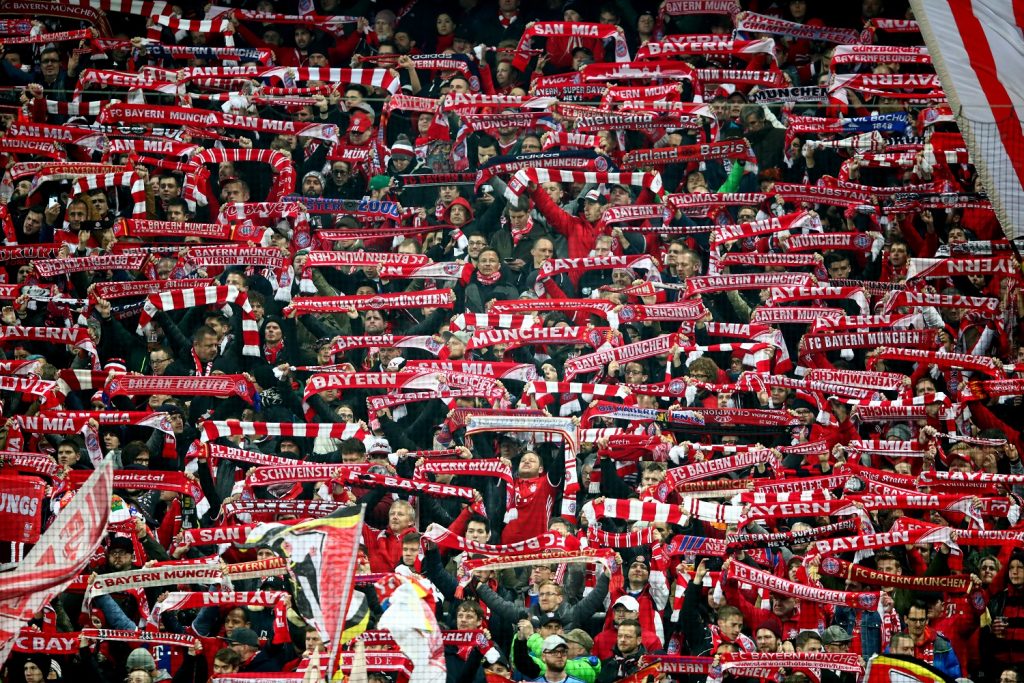Why Europe’s soccer clubs are facing a balancing act between paid for and free TV content
June 19, 2017
German soccer giants Bayern Munich launched a new paid-for club channel, FCBayern.tv plus, earlier this year. The channel is part of a distribution agreement with Deutsche Telekom (DT), the club’s lead sponsor, which saw the channel offered to DT’s customers via a promotional launch offer.
The move represents Bayern’s solution to the strategic questions facing every major sports team right now: what is the best media distribution strategy for a soccer club in 2017? And what is the best way of monetising that content?
In recent years, clubs and leagues have been experimenting with various models of monetising their retained rights, with a variety of free and pay models to be found. As a result, soccer clubs have evolved into emerging media businesses, and are continuing to explore new ways to use their content.
Clubs own the delayed rights to first-team matches, as well as all of the content they create in-house, including behind-the-scenes documentaries, interviews, training ground footage as well as live rights for matches played by other teams such as the Under-21s. Clubs use this to capture the hearts of existing fans and also attract new ones across the globe.
Get your calendars out – the #FCBayern summer schedule is here! #packmas #MiaSanMia pic.twitter.com/A4cjYr3BUn
— FC Bayern English (@FCBayernEN) June 8, 2017
Some of the elite clubs (members of the prestigious ‘G10’ group of the world’s leading clubs) have chosen to offer their content for free, distributing it far and wide while working with sponsors and other partners to ensure that they monetise its full value.
In contrast, Bayern join a number of elite football clubs, including 20-time English champions Manchester United, that run a paid-for club channel.
For clubs that want to grow their fanbase quickly, the fully-free strategy lends itself well to the use of social media and other platforms to drive significant scale and reach. This in turn proves value to club sponsors, who will always look for evidence of not just a significant fan base, but a highly engaged social media audience that interacts with the club.
Manchester City is a good example of a club who have used such a ‘distributed media’ strategy. City’s focus is on making great content, distributing it far and wide, taking its sponsors along with them.
In Bayern’s case, its paywall strategy continues to fit with its wider strategic objectives right now. The team’s on-pitch performance and history allows it the luxury of having a large and growing fan base who are eager to consume, and pay, for content.

Bayern Munich fans show their support for Carlo Ancelotti’s side
OTT Offering
This content is available via an OTT offering, where a large library of on-demand content both short and long form, punctuated with infrequent live content such as press conferences, player announcements, training sessions (when access is available) as well as live matches where the club holds those rights, which all makes for a compelling customer proposition.
What’s new about the club’s strategy, is the launch of a linear channel and a 24:7 live linear channel, which is an interesting move for Bayern.
There are several examples of highly successful formats that have used a similar approach of live studio based formats. Copa90 is an example of a fully free social football channel, which has built a significant and highly engaged audience without owning or acquiring any media rights whatsoever. The channel’s opinion based shows such as ‘Comments Below’ are a great example of formats that drive a good engagement to reach ratio.
The next generation
While we can expect Bayern to be pleased with this increased distribution, and for the deeper strategic partnership with their lead sponsor, the difficulty for a club trying to protect paywall revenues is balancing the expectation of fans. As more and more people turn to social media for sport content as their first port of call, they will expect more accessible content from clubs – not less – and this is particularly relevant for younger audiences, who will be the next generation of fans.
Many leagues and clubs are experimenting with syndicating their most prized rights (their live games, often for non-first team matches where they have more ability to broadcast them) onto platforms such as Facebook. The business model there will be the opportunities for monetising brands, not fans.
For Bayern, it will be interesting how it balances the increasing demands from young fans for live social content with the strategy to protect that content behind the paywall.
What’s clear is that there is no blanket solution for football clubs, it’s down to how the chosen content and distribution model fits within the club’s wider business and marketing strategy.
Do you want to share your views on Bayern Munich’s decision to launch a TV channel? Head over to our Community page to join the discussion!

